Film photography is subtly different from digital photography, with film cameras having extra parts that you won’t find on their more modern cousins.
To help you get started in the world of film photography, this article covers the basic parts of a 35mm camera, giving you film camera parts and functions that are common among pretty much all film cameras, focusing mainly on SLR camera parts and functions, but also including info on rangefinders and point and shoot film cameras.
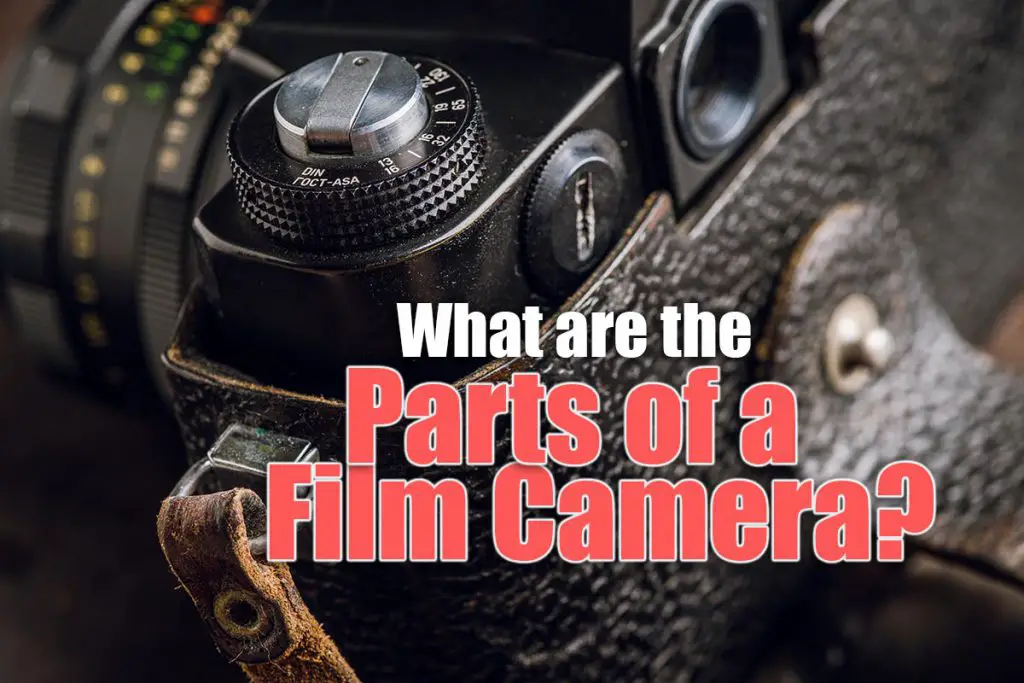
Parts of a Film Camera
Front Side / Top Side
The front and top side of a 35mm film camera consists of the following components/parts.
1. Shutter Button
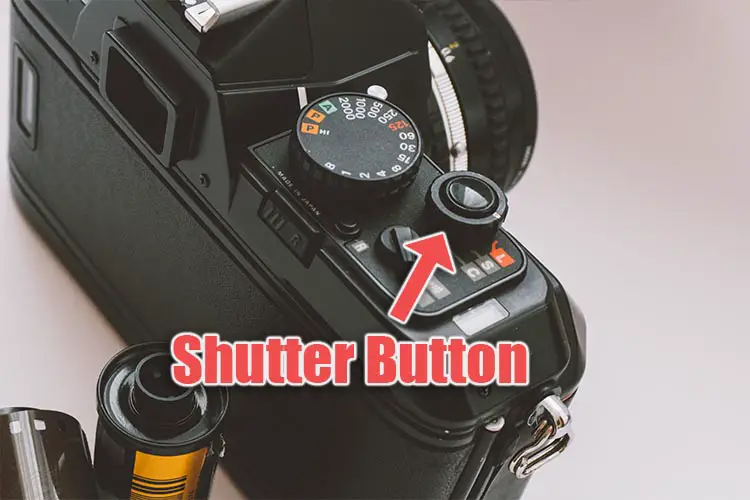
The Shutter Button or the shutter release button releases the mechanical controls that operate the shutter curtains to take the picture.
2. Film Advance Lever
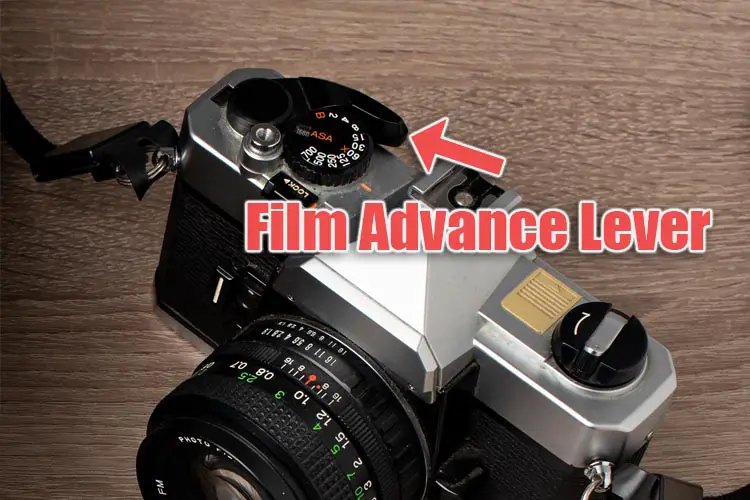
The Film Advance Lever is the mechanical control that advances the film by one slide when you yank it to the right. The film advance lever and the shutter button are placed next to each other on almost all film cameras.
3. The On/Off Switch
Not all film cameras come with a discrete On/Off switch. The film advance lever on some cameras works as the locking mechanism that ensures that the camera’s built-in light meter is no longer active and therefore not drawing power from the batteries. In other words, this button doubles up as the On/Off switch. Some film cameras have this functionality, while others may not have it.
4. Shutter Speed Dial
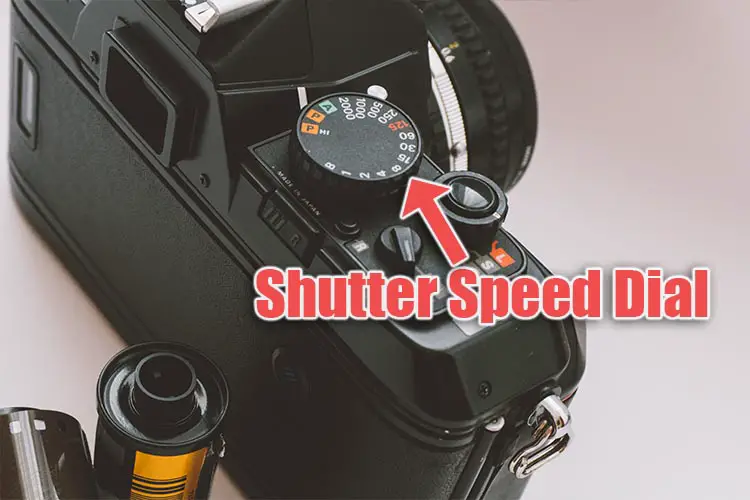
The mechanical Shutter Speed Dial is your shutter speed selector. It allows you to pre-select a shutter speed as per the requirement of the shot. Shutter Speed denotes the length of time for which the shutter curtains shall remain open for the exposure to happen.
5. Shutter Curtain
Mechanical Shutters are of two main types – Focal Plane shutters and Leaf Shutters. If your film camera comes with a focal plane shutter, it’s likely the rolling curtain type. There are two curtains on the rolling curtain-type shutter mechanism.
The job of these shutter curtains is to open to allow light to reach the film and then close immediately when the exposure is done, and so they are therefore located inside the camera, sitting behind the lens.
6. Serial Number
The Serial Number is a metal engraving that marks the manufacturing serial number of the camera. This is an identifier that’s necessary for servicing and warranty purposes.
7. ISO Number Indicator / Film Speed Indicator
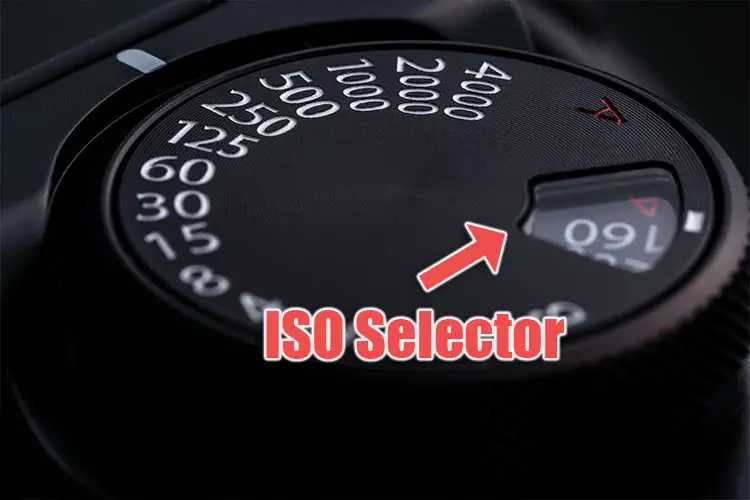
The ISO number is a mechanical control that tells the camera the speed of the film you’re using. So, depending on the film speed, you can dial in the correct ISO number and set it for that whole roll of film. It is often found set into the shutter speed dial.
8. Stop Down Lever
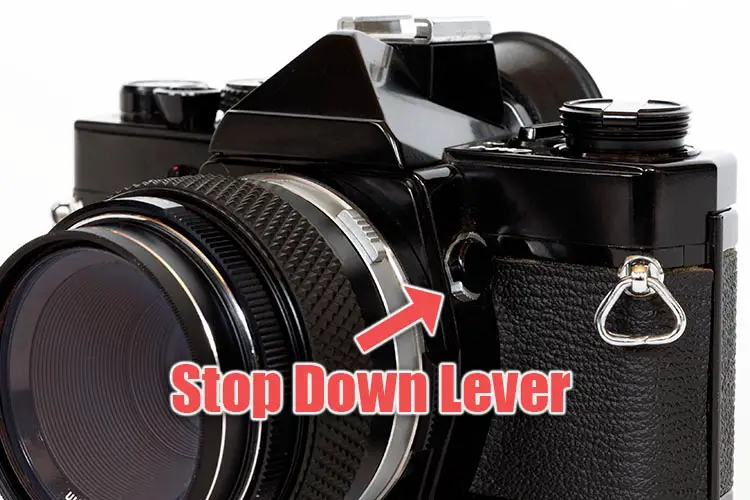
The Stop Down Lever has an interesting job to do. When you press the shutter release button, the camera activates whatever Aperture you’ve dialed in and accordingly captures an image using that Aperture and other exposure settings.
When you look through the viewfinder, you get a view produced by the Lens wide open (the widest Aperture possible on the Lens).
It does not show you the view that it will capture using the Aperture you’ve dialed in.
To see the picture as it is captured, you can press the Stop Down lever to engage the correct Aperture, which therefore shows you the depth of field that your chosen aperture will have. The position of this button varies, but is usually on the front of the camera near the lens.
9. Hot Shoe Mount
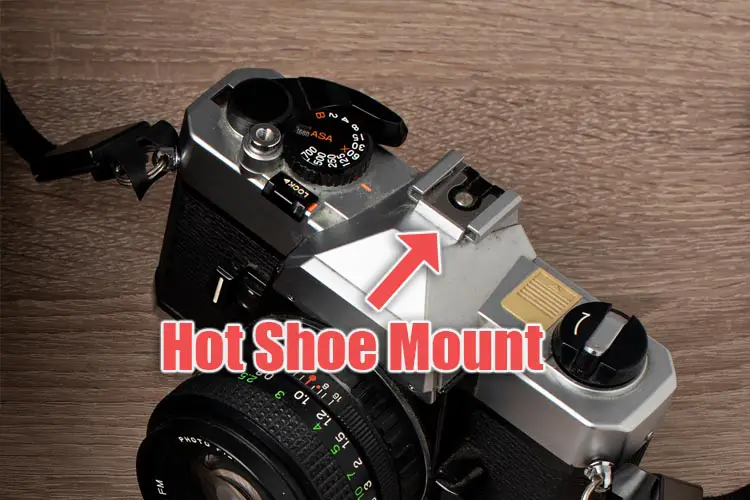
The Hot Shoe mount is where you mount an external light like a flash. The hot shoe triggers a flash without the need for any cables.
It is handy for shooting in low-light situations. Even when you’re shooting in bright light in outdoor conditions, it’s helpful to fill in shadows.
Some older film cameras don’t have a hot-shoe. They have what is known as a cold-shoe. A cold shoe cannot trigger a flash automatically. So, you need to connect the flash to a plug on your camera using a cable to trigger the flash when you press the shutter release.
10. The Tripod Mount
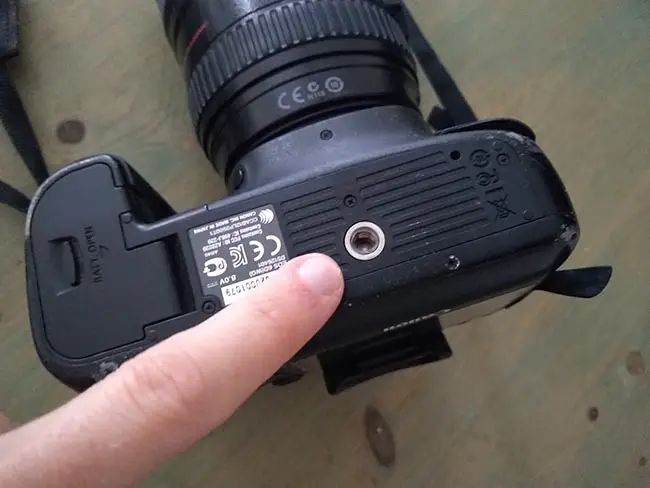
Every film camera will have a way to mount it on a tripod. It’s on the bottom plate of the camera. It is where you can screw in a quick release plate to mount the camera onto a tripod.
11. Film Rewind Lever & Camera Back Release
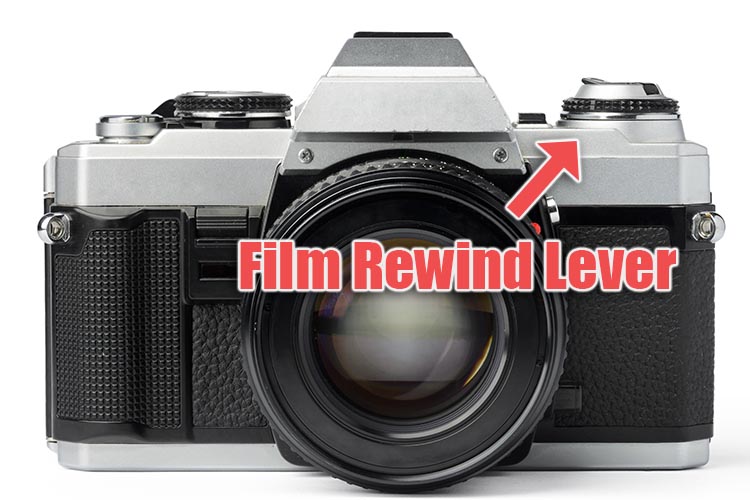
The Film Rewind knob (which also doubles up as the safety lock for the camera back) is used to rewind the film after you’ve exhausted it. You need to tug the rewind lever and spin it clockwise to rewind the film from the right spindle to the left one.
To open the back cover, which is forced closed using a mechanical lock to prevent accidental opening of the back of the camera and exposing the film to light, you have to work the release mechanism. The release mechanism is combined with this film rewind lever.
The actual mechanism will vary from camera to camera. Usually, there is a small lever that you need to push and then yank the top of the rewind lever to unlock the camera back.
12. Frame Counter
The Frame Counter is just a readout of the number of exposures that have been taken using the current film roll that you’ve loaded into the camera. When you load a fresh roll of film into your camera, you need to reset it.
13. Lens
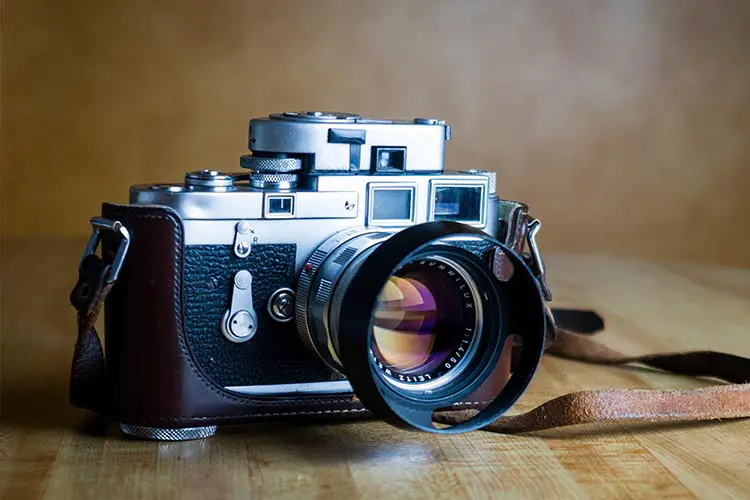
The Lens dominates the front of the camera. It’s an external attachment, an optical device that allows light to pass through it and then hit the film at the back of the camera.
14. Lens Release
The Lens Release button unlocks the mechanical connection between the camera’s lens mount and the Lens so that you dismount it.
15. Reflex Mirror
The Reflex Mirror is what gives SLR cameras their name. The R in SLR stands for Reflex. The purpose of the Reflex camera is to bounce the light coming through the Lens at a 90-degree angle straight upwards to the viewfinder and your eye. When you press the shutter button, the reflex mirror shifts upwards blocking the viewfinder, and out of the way of the beam of light coming through the lens, so that an image can be recorded on the film.
16. The Pentamirror/Pentaprism
The Pentamirror/Pentaprism depending on the camera make and model, is located under the hunch on the top plate, directly in front of the viewfinder. The job of the pentamirror/pentaprism is to redirect the reflected light from the Reflex mirror toward the viewfinder.
The image you’re looking through the viewfinder is coming via the Lens and getting reflected first by the Reflex mirror and then by the Pentamirror/Pentaprism.
Rear-Side of the Film Camera
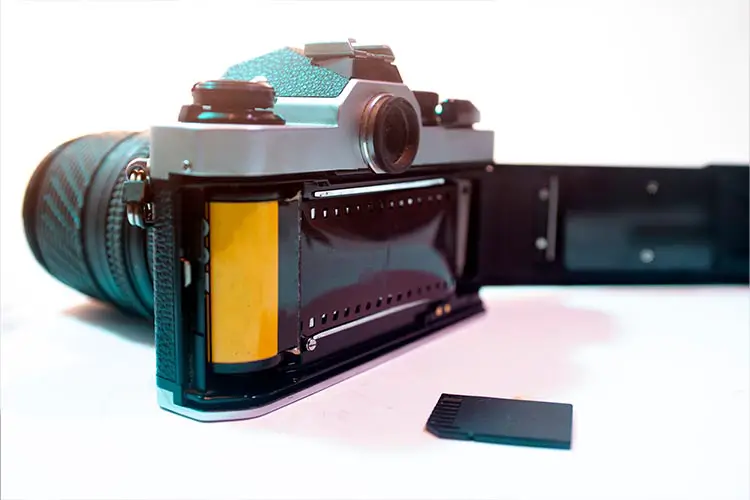
The rear of a 35mm film camera consists of the following components/parts.
17. Back Cover
The back cover protects the film and the shutter curtains and prevents light from exposing the film inside the camera.
18. Pressure Plate
Directly underneath the back cover is a thin plate. It’s known as a Pressure Plate. The purpose of this plate is to tighten the film as it arrives in the Exposure Area and ensure that it does not move about when it’s exposed to light.
19. Film Take-Up Reel
Also known as the Take-up spool, this is the empty spool on a film camera that takes up the film after being exposed to light.
20. Rewind Release Button
The job of the Camera Rewind Button is to unlock the Rewind Mechanism so that you can then use the Rewind Lever to rewind the film.
The rewind button may or may not be positioned at the back of the camera. On some cameras, like the Canon AT-1, it’s located on the bottom of the camera!
21. Film Compartment
The Film Compartment is located inside the camera. You will have to open the back cover to access this compartment. It houses the unused roll of film inside it.
22. Film Sprockets
The Film Sprockets are small gear-like guides that guide the film to the exposure area.
23. Viewfinder
The optical viewfinder segregates an SLR camera from rangefinders and compact camera systems. The optical viewfinder is powered by a pentamirror/pentaprism (already discussed above) and a reflex mirror.
The view you see through the viewfinder is the actual view that the Lens sees and therefore is the same view that the film will capture. This is distinct from rangefinders, where the viewfinder is not connected to the picture-taking lens, but uses its own lens.
Read More:
What are the parts of a DSLR camera?
What are the parts of a camera lens?
Guide to the best Minolta film camera
Finding the best Nikon film camera





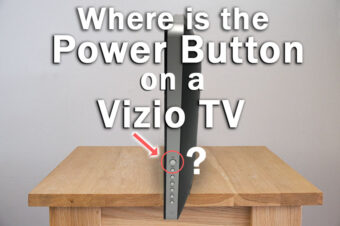
Leave a Reply